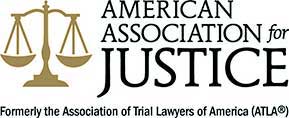What Is Circumstantial Evidence And Is That Type Of Proof Any Good
February 10, 2016
LOOK TO THE LAW:
A: We often hear reference made, on court TV shows and otherwise to someone being convicted on the basis of circumstantial evidence. Or something being proven on the basis of circumstantial evidence. The insinuation is that proof of something based on circumstantial evidence is not as strong, or is questionable. Is that true?
Clients and friends have asked me many of the same questions over the course of my career. This is one in an ongoing series of “lawyer questions and answers”. Hopefully, this will be useful to you, or at least interesting.
The short answer is no. Circumstantial evidence can be very strong evidence. Circumstantial evidence can overwhelmingly point to one conclusion or another, and legitimately so.
Circumstantial evidence is distinguished from direct evidence. The age-old example is this: If you looked out the window and saw someone standing there, that is direct evidence that he was standing there. If you looked out the window and there was no one there, but there are footprints in the snow, that is circumstantial evidence that someone had been standing there.
Both direct evidence, and circumstantial evidence are strong proof in this example. Both lead to the same conclusion, that someone had been standing there.
In criminal cases, the accused are very often convicted on the basis of multiple pieces of circumstantial evidence. Interestingly, direct evidence is often the weakest form of evidence in a criminal case.
Direct evidence (eyewitness testimony) to the effect that “I saw Dan the Defendant commit the crime” is notoriously unreliable. Even though the eyewitness has actually seen the crime occur, the human mind forgets or mis-remembers things that did occur, and remembers things that did not occur. Many studies have been conducted wherein psychologists will stage a “crime” in front of eyewitnesses. The eyewitnesses will then be called later to testify as to what they witnessed.. The mistakes they make are many, and are often very basic. They say the perpetrator was fat when he was skinny, tall when he was short, old when he was young, etc. In one study, where DNA had later exonerated wrongfully-convicted persons, erroneous eyewitness identification had occurred in 90%. Direct evidence in this area can be the worst evidence of all.
On the other hand, circumstantial evidence can be very compelling. Let’s say a robbery occurs which is caught on security video camera which shows a white Chevy Impala with Pennsylvania plates pull up to a gas station. A tall, thin white male with a goatee gets out limping, goes into the gas station, robs it, and drives away.
The police take the Pennsylvania plate number from the video and discover that it belongs to a Chevy Impala which was stolen from in front of its owner’s house in Pennsylvania. Dan the Defendant lives right down the street, and has a long history of auto theft and armed robbery. He is a tall, thin white male, and he has a goatee. He limps. He cannot account for his whereabouts at the time of the robbery, and he has been recently seen spending a great deal of cash when he was always broke. Does all this circumstantial evidence conclusively prove that Dan the Defendant robbed to the gas station? No, but it points in that direction. Strongly.
So something which is proven based on circumstantial evidence can be legitimate and strong…often stronger than something based only on direct evidence.
John Hoyt, Esq.





